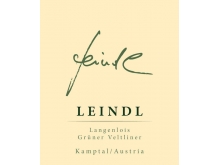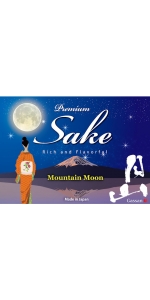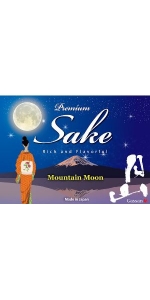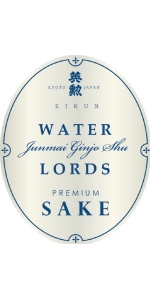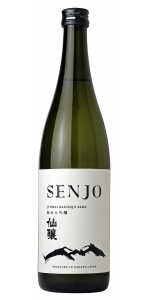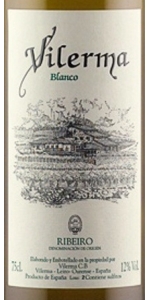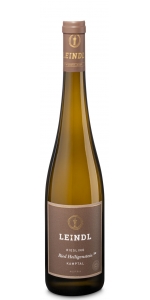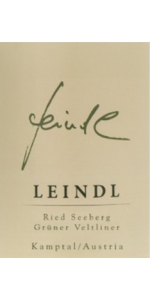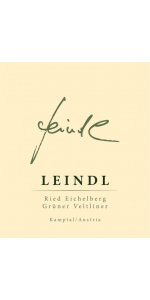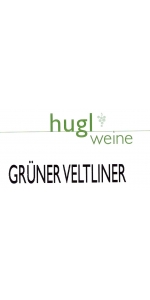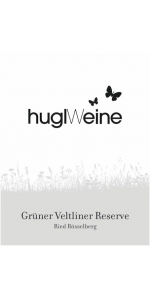Leindl Gruner Veltliner Langenlois 2021
6 bottles with free shipping for: $150.00
12 bottles with free shipping for: $252.00
| BUY MORE! SAVE MORE! | ||||||||||||||||||||
|
| Country: | Austria |
| Region: | Poysdorf |
| Winery: | Leindl |
| Grape Type: | Gruner Veltliner |
| Vintage: | 2021 |
| Bottle Size: | 750 ml |
Leindl Gruner Veltliner Langenlois is made from 100 percent Gruner Veltliner.
This classic Gruner Veltliner comes from the famous wine-growing region of Langenlois. A very typical fruity and fresh Gruner Veltliner offering green apples, juicy, minerality, a pleasant body and a good length. It is ideal with a wide range of dishes.
Cold Fermentation.
Aged on the lees for 6 months in Stainless Steel tank. No Oak. No ML.
Produced from vines of 5-20 years old on slate soils.
Leindl Estate
Georg Leindl has been a flying winemaker since 1989 at numerous wineries.
He has worked with and rented space from Nigl for some time.
He is currently working from 5 hectares of vineyards but he is planning on moving to 12 hectares in time.
Date Founded: 2013
Georg Leindl has been in the wine industry for quite some time, and in 2013, he decided to created his own Estate.
He studied Food and Biotechnology; He was a researcher at the Federal College for Oenology and Pomology at Klosterneuburg. He has also been a consultant in Oenology for International and National companies.
and a little Viognier too.
Grüner Veltliner is coming from the Seeberg vineyard. Total acreage is 2 hectares (4.94 acres)
Riesling is coming from the Heiligenstein vineyard. Total acreage is 3 hectares (7.41 acres)
Age of the vines is roughly 15 to 35 years old.
Woodsy honeycomb, nutshell, and mushroom patch aromas with a satiny fruity-yet-dry medium-to-full body and a delicate savory mushroom stock, chestnut, and golden beet driven finish. A fine choice for tempura. 91 Points -Beverage Tasting Institute
RATING: 91 points (Exceptional)
CATEGORY: Junmai Ginjo Sake, Sake
ALCOHOL BY VOLUME: 15.4%
TASTING LOCATION: In Our Chicago Tasting Room
TASTING DATE: Dec-05-2012
WINE ID: 200767
Woodsy honeycomb, nutshell, and mushroom patch aromas with a satiny fruity-yet-dry medium-to-full body and a delicate savory mushroom stock, chestnut, and golden beet driven finish. A fine choice for tempura. 91 Points -Beverage Tasting Institute
RATING: 91 points (Exceptional)
CATEGORY: Junmai Ginjo Sake, Sake
ALCOHOL BY VOLUME: 15.4%
TASTING LOCATION: In Our Chicago Tasting Room
TASTING DATE: Dec-05-2012
WINE ID: 200767
Sake Eikun Junmai Ginjo Water Lords is made with Iwai rice.
Eikun sake uses water from a source called "Fusui", rated as one of the top 100 sources of water in Japan. This water source is located just south of the ancient Japanese, and still cultural capital of Japan, Kyoto.
Aromas of macadamia oatmeal cookie, spicy zucchini bread, and vanilla cream with a satiny fruity-yet-dry medium-to-full body and a layered, banana custard, jicama, salted whole nut, apple, and radish nuanced finish. A Wonderfully vibrant and flavorful sake.-Beverage Tasting Institute 94 points (Exceptional)
RATING: 94 points (Exceptional)
CATEGORY: Junmai Ginjo Sake, Sake
ALCOHOL BY VOLUME: 15.3%
TASTING LOCATION: In Our Chicago Tasting Room
TASTING DATE: Dec-05-2012
WINE ID: 200768
Juicy & Refreshing. Full of fruity flavors with clean sweetness. Brewed with Hitogokochi, the special sake rice harvested in Nagano, and natural water slowly filtered down the Japan Alps. In 1866, toward the end of the Edo period, Matsujirou Kurogouchi and his family started a small sake brewery currently called Senjo named after Senjo Ga Take, a 3000-meter peak in the Japanese Alps. Today Senjo Brewery strives to combine art with science and old skill with new technology by adding modern twits to the rich historical traditions of Sake brewing.
Pair with Deep-fried fish with sweet & sour sauce, Young sweetfish tempura (chiayu tempura), Caesar salad.
Vilerma Blanco Ribeiro is made from 80% Treixadura, 6% Torrontes, 4% Godello, 4% Albariño, 3% Loureira and 3% Lado
Ribeiro blanco is produced from estate-grown grapes using traditional winemaking.
Pale yellow color with green highlights.
Intense white fruit aromas when young, it develops complex nuances after a few years in the bottle.
In the mouth it is ample, full and pleasant with a long and fruity finish.
Fermentation in Stainless Steel tank at controlled temperature.
Leindl Riesling Zobinger Heiligenstein Kamptal is made from 100 percent Riesling.
Medium yellow green. Fine nuances of ripe apricot, a hint of yellow apple, delicate herbs and spices, mineral Touch, hints of candied orange zest. Juicy, elegant, fine stone fruit, touch of finesse acidity, salty minerality in the finish, remains long, already well to drink.
Cold Fermentation.
Aged on the lees for 12 months in Stainless Steel tank. No Oak.
No ML
Review:
"Aged on the lees for 12 months in stainless steel, this wine saw no oak. Its original name – Hellenstein -- referred to hell stone, as the vineyards are on a mountain where the “sun burns like hell.” It was later renamed Heiligenstein, which translates as holy rock, and is a geological island of desert sandstone, with volcanic matter. Its earthy slate character lends out scents and flavors of honeyed apricot, salty pears, and stone fruit pith."
-The Tasting Panel (May/June 2022), 94 pts
Leindl Gruner Veltliner Seeberg Kamptal is made form 100 percent Gruner Veltiner. Medium yellow green. Fine yellow apple fruit, delicate hint of quince and honey, candied orange zest, highly attractive bouquet. Juicy, good complexity, extract core sweet, silky texture, fine acidity bow, fine and salty minerality, great length, secure aging potential, a very finesse Veltliner-style.
Review:
“Inviting nose, with layers of quince and elegant, aromatic herb leading through to a richly textured palate of opulent fruit and a fine acidity.”
- Decanter World Wine Awards 2023, 96 pts
Leindl Gruner Veltliner Eichelberg is made from 100% Gruner Veltliner.
Medium yellow green. Fine yellow apple fruit, delicate hint of quince and honey, candied orange zest, highly attractive bouquet. Juicy, good complexity, extract core sweet, silky texture, fine acidity bow, fine and salty minerality, great length, secure aging potential, a very finesse Veltliner-style.
Cold Fermentation.
Aged on the lees for 12 months in Stainless Steel tank. No Oak.
Leindl Gruner Veltliner Seeberg Kamptal is made form 100 percent Gruner Veltiner. Medium yellow green. Fine yellow apple fruit, delicate hint of quince and honey, candied orange zest, highly attractive bouquet. Juicy, good complexity, extract core sweet, silky texture, fine acidity bow, fine and salty minerality, great length, secure aging potential, a very finesse Veltliner-style.
Review:
"Here’s a wonderfully cool and elegant Gruner Veltliner with mountain freshness that makes it very enticing. Medium-bodied and quite sleek, but with a touch of marzipan richness on the mid-palate, then a stunning wet-stone freshness in the long and polished finish. Drink or hold. - Stuart PIGOTT"
- James Suckling (October 10th 2024), 95 pts
Leindl Riesling Zobinger Heiligenstein Kamptal is made from 100 percent Riesling.
Medium yellow green. Fine nuances of ripe apricot, a hint of yellow apple, delicate herbs and spices, mineral Touch, hints of candied orange zest. Juicy, elegant, fine stone fruit, touch of finesse acidity, salty minerality in the finish, remains long, already well to drink.
Cold Fermentation.
Aged on the lees for 12 months in Stainless Steel tank. No Oak.
No ML
Review:
"Aged on the lees for 12 months in stainless steel, this wine saw no oak. Its original name – Hellenstein -- referred to hell stone, as the vineyards are on a mountain where the “sun burns like hell.” It was later renamed Heiligenstein, which translates as holy rock, and is a geological island of desert sandstone, with volcanic matter. Its earthy slate character lends out scents and flavors of honeyed apricot, salty pears, and stone fruit pith."
-The Tasting Panel (May/June 2022), 94 pts
Hugl Gruner Veltliner (liter) is 100% Grüner Veltliner
This is an intense and concentrated wine offering pleasant citrus and grapefruit aromas, exotic tropical fruits with a hint of freshly ground white pepper. Full-bodied dry wine with a firm mineral backbone.
A firm mineral backbone, gives it the strength of character to work well with many cuisines.
Hugl Rosselberg Horse Hill Gruner Veltliner is made from 100% Grüner Veltliner
A powerful, very ripe Grüner Veltliner, intense and full-bodied with a long finish.
The ripe grapes are processed very gently with 12 hours on the skins and then vinified in Stainless Steel tanks. No Oak.
A firm mineral backbone, gives it the strength of character to work well with many cuisines.
- back
O'Shaughnessy Cabernet Sauvignon is made from 93% Cabernet Sauvignon, 2% Merlot, 2% Malbec, 2% St. Macaire, 1% Petit Verdot.
This 2019 Napa Valley Cabernet Sauvignon has a dark blue/black color and an opaque center. This is a stellar wine with black cherry and blue fruits. The flavors are bright and focused with gorgeous layers of black cherry, plum butter, and mixed berry compote. This expansive Cabernet Sauvignon finishes with flavors of smoked cherry wood and smooth but age worthy tannins.
Review:
The base 2019 Cabernet Sauvignon Napa Valley is terrific, and while I don’t know the price, I suspect it’s a great value. Deep purple-hued, with terrific mulled currant and blackberry fruits, it has lots of ripe herbal, chocolaty spice notes, full-bodied richness, sweet tannins, and a great finish. This is pure Napa Valley goodness to drink over the coming 10-15 years.
-Jeb Dunnuck 94 Points
Argot Simpatico Ranch Chardonnay is made from 100 percent Chardonnay.
Powerful aromas of key-lime, white flowers, orange blossoms and a fierce, flinty, sauvage note define a wildly complex nose. Once in the mouth, gracefully pronounced textures coat the palate delivering an exotic interpretation of cool-climate Chardonnay character — lime peel, orange blossom, ginger and clove —lingerings deep into a vibrant finish.
Planted 1978. Shallow volcanic soils on the gently-sloped, south-facing foothills of Bennett Peak on Bennett Valley’s floor. One of California’s coolest Chardonnay vineyards. In the final year of 3-year draught cycle, Simpatico Ranch saw its earliest ever harvest and smallest crop, exposing a reserve of exoticism and minerality previously untapped. A watershed vintage for both the vineyard, and appellation. Night harvested by hand on 9/16, whole-cluster pressed direct to barrel; no settling to ensure maximum lees contact. Barrel fermented on heavy lees. Malolactic fermentation. 16 months in French oak, 50% new. Finished 2 months in steel tank, low Sulphur during barrel elevage.
Review:
The 2022 Chardonnay Simpatico Ranch comes bounding out with exuberant notes of juicy peaches, ripe yellow apples, and persimmons, followed by hints of fresh ginger and toasted almonds. The medium to full-bodied palate is soft spoken and savory with a creaminess to the texture and lovely freshness defining the long whispery finish.
-Wine Palate 96 Points

